Blog
-

9 Common Leadership Missteps To Avoid
The role of the school administrator is evolving from a building manager into an instructional leader. This shift is not easy, and all leaders strive to be the best they can be. Being a school leader isn’t easy and you are not going to make the right call all the time. However, you can learn to avoid common missteps.There are countless articles about being a good school leader, but we also need to learn how to recognize and avoid missteps. Although making a misstep can be a learning opportunity, taking the time to learn how to recognize and avoid common mistakes can help you become productive, successful, and respected by your staff. Here are some examples of decisions or actions that can become a problem for you and your school. Understanding the misstep is the first stage in avoiding it.1. Trying to be popular. Too often, leaders think they must please everyone. And worse, please them all the time. Yes, you want to be well-liked, but it is more important to be respected. Respect is gained by a leader when he/she is consistent, has clear communication, sets expectations and clear boundaries, and makes tough (and usually necessary) decisions. Sometimes, those tough decisions are not popular. I’ve found that if you keep students at the core and are consistent, most staff accept unpopular decisions if you communicate the reason. Not asking your staff (when you can) for their input before the decision is another misstep you want to avoid.2. Not defining goals. When your staff doesn’t know your goals as a leader, they are not efficient educators and it is difficult to support you. It is difficult for staff to be productive if they don’t know or see what they’re working for or what their work means. Setting your goals as a leader is the road map for your success and the school’s growth.3. Assuming you are right instead of working to get it right. Often, leaders mistakenly think a title and a position means their way is automatically the right way. This comes from not listening to input from other staff members to add perspective and also engage their ownership and involvement in the decision-making process. The more time a leader spends involving his/her team at the beginning of the process, the easier it will be to carry forth a decision and move toward your established goal.4. Talking the talk and not walking the walk. Leaders must mold their own behavior to reflect what they want from staff. Successful leaders tend to be positive role models for their staff. A leader must lead by example: If teachers need to stay late, you should also stay late to help them. Or, if the culture is that no staff eats lunch in their classroom, then set the example and eat in the staff room or with the students. The same goes for attitude—if you’re negative some of the time, your staff will be negative, too. If you are a positive leader, your team will be positive. If you just “tell” others what to do, the same negativity will come through in your staff. Model the traits that you would like to see your staff members display.5. Not providing feedback. A common misstep leaders make is to not offer constructive feedback to their staff. When you don’t provide prompt feedback rooted in evidence, you’re depriving your staff the opportunity to improve their practice. Not providing feedback also removes the boost of confidence in being told they are doing a good job. To avoid this misstep, provide regular growth feedback, focused in an effective manner.6. Failure to delegate. Some school leaders don’t delegate because they feel that no one but them can do tasks correctly. What quickly follows is stress and burnout. Delegation can take a lot of effort as it can be hard to trust your staff to do the work correctly. But unless you delegate, you’re never going to have time to focus on the vision and goals of your school. Leaders have a busy, full schedule, so it makes sense to ask others to handle a variety of tasks.7. Not making time for staff. It’s easy to get wrapped up in email, phone calls, data, and your own work. Before you know it, you are not available to your staff. People must come first. If you are not available when they need you, your staff will feel not supported and lose trust. However…8. Be careful of the open-door policy! Make yourself available to your school community but do it strategically. Block out the times in your daily and weekly calendar to focus on being visible, classroom visits, the students, and your goals. Schedule times during the week for people to make appointments to see you if they feel the need. Balance time for staff but don’t lose focus on the goals of your day.9. Meeting “just because.” Meeting for the sake of having regular meetings—particularly if there is nothing on the agenda—frustrates people. Plan meetings for a strategic purpose or to develop professional learning outcomes, not to disseminate information. Staff will appreciate this strategy and see you as understanding their needs. When you do meet, staff will be focused and ready to contribute.There are so many different characteristics and traits of a good leader, but these missteps are ones leaders often find themselves falling into and spending too much time getting out of. Knowing the pitfalls may help you avoid them. Leadership effectiveness must result in enabling, supporting, and empowering your staff to do everything in their ability to support learning. Avoid the missteps and jump right into the leading. -

The Kids are Not Alright… And Neither are the Teachers
Over this past month I’ve had conversations with districts from coast-to-coast that are at a breaking point. District leaders are taking previously unheard-of steps to try to head off… no, it’s too late for that… to catch up to the stress that’s crushing the spirits of educators.
The stresses that set upon our educational system were more apparent in the 2020/21 school year… parents, employers, and whole communities felt the impact of at-home schooling and the ever-present concern of Covid. The stress was identifiable, and the prayers for things to get back to normal were audible on everyone’s lips.
And now teachers and students are back in the classroom. Parents are back to work… still often from home. And the kids? Well to quote one assistant principal from Massachusetts, “As a disciplinarian, this is without a doubt the most trying return to school we’ve ever experienced. The amount of discipline issues we’re dealing with that were intense, large discipline issues – vandalism, violence, threats – was not something that I was at all prepared for… The number of students in dire need of counseling is off the charts.”
We <were> worried if kids were going to wear masks… but it’s clearly bigger than that.
After the nation has made herculean efforts to return to the classroom this year, a district in Oregon has voluntarily sent kids back to online learning for 2 weeks because of extraordinary behavior issues.
Another east-coast school has decided to give their staff back their PD time, allowing teachers to take that time to try to just “do what they need” because everyone is already burnt out and just “not doing well.”
We know that in the before times, teaching was stressful for a variety of reasons… lack of respect, systematic shortcomings, emotional investment, financial stress. None of that has changed. But add to that the stress and frustration from the last 2 years and the new behavioral issues that are so prevalent as students readjust to being back together, and the sum total is something we’ve never seen before.
As a result, Florida is seeing a 65% increase in staff shortages. Similar shortages are documented in California, Texas, and South Dakota. And there are seemingly infinite anecdotal accounts from other states as well.
Is there any good news? Well… this is where leadership comes in. On the surface, things sure are grim. But that assistant principal from Massachusetts? She continues… “The number of students vocalizing their need for assistance is also a lot higher, so given the state of the kids upon their return I try to remind myself that their calling out for help is actually a positive.”
A superintendent from Missouri shared that “Coming out of the school board meeting, you’d think that social and emotional support has always been our first priority.”
Dr. Kimberly Schonert-Reichl, an applied developmental psychologist from the University of British Columbia, puts it this way, “District leaders might say that SEL is just another thing on the plate… but SEL IS the plate.”
So that we’re beginning to understand the importance of ensuring student’s emotional well-being ahead of mandated instruction is a very good thing. As evidence of that new emphasis, some companies, like Edsby.com, are embedding SEL check-ins into their learning platforms. And the number of districts taking SEL programs like Goldie Hawn’s MindUP Foundation seriously are on the rise. Those are really positive signs.
But those efforts alone don’t address the stress that teachers are feeling, and the repercussions that will manifest in further te樂威壯
aching shortages are still swelling on the horizon.As leaders, where do you see your districts taking steps to address that? Is this a matter of time and “getting back to normal,” or are you starting to see what a “new normal” is going to look like?
Notes & Sources
School Leaders Take Note: Teacher Care is a Lot More Than Self-Care: https://www.edsurge.com/news/2021-11-02-school-leaders-take-note-teacher-care-is-a-lot-more-than-self-car
Why So Many Teachers Are Thinking of Quitting
https://www.washingtonpost.com/magazine/2021/10/18/teachers-resign-pandemic/
No, the teachers are not okay: https://www.washingtonpost.com/education/2021/10/20/teachers-are-not-okay/
How the pandemic is still affecting educators in 2021:
https://www.edsby.com/how-the-pandemic-is-still-affecting-educators-in-2021/?locale=en
MindUP: https://mindup.org
Dr. Kimberly Schonert-Reichl: https://sel.ecps.educ.ubc.ca/dr-kimberly-schonert-reichl/
Florida Education Association: https://feaweb.org/issues-action/teacher-and-staff-shortage/
Fort Worth Start Telegram: https://account.star-telegram.com/paywall/subscriber-only?resume=254267518&intcid=ab_archive
Learning Policy Institute: https://learningpolicyinstitute.org/sites/default/files/product-files/California_COVID_Teacher_Workforce_REPORT.pdf
Rapid City School District Looking to Fill 120 Open Positions: https://www.keloland.com/news/education/rapid-city-school-district-looking-to-fill-120-open-positions/
-

Don’t Let A Bad Apple Hold You Down
As I entered high school, I felt confident about the transition and fitting in with my classmates. After a successful three years in middle school, I fearlessly entered high school in 1984, making friends and becoming somewhat popular. PHS (Pittsfield High School), here comes X-Man. I felt I knew something about everything. That sounds about how most High School kids act, right? At least the boys who have this bravado for no reason whatsoever. I was cranking my Beastie Boys and NWA, thinking Pittsfield High School was lucky to have me. There is a difference between confidence and cockiness. By my sophomore year, I was a solid B student (doing jus威而鋼 t enough to get by), on the varsity basketball and football team, and believing things were going my way. This feeling is giving me a false sense of who I am and what I could accomplish. Sadly, there are many examples of how this belief got me into some sticky situations, but none more than me thinking I could ride my bike from Pittsfield to the Albany Mall. For those who don’t know Western MA and Albany area, it is a 49-mile drive on two highways and takes about 60 minutes in a car. My friend “Spaz” and I wanted to spend the day hanging at a “cool” mall since Pittsfield’s mall was only a few shops.
So here is how an overconfident high school sophomore thinks.
- I have been practicing football five days a week, so I am in shape.
- A car gets to the Albany Mall in an hour, driving 60 MPH, and at the gym, I can ride the bike 30 MPS. So with that math, it should take us two hours to ride 50 miles. We practiced for two hours in football so we thought we could do it.
- We don’t need a map (cell phones are about ten years away) because we will follow the signs we saw when my mom drove us before.
- Sleep the night before at my dad’s because he never checks or asks what I do. I might as well take advantage of this time he is out of jail. God knows when he will be back in, and my mom would never let us do this.
SO, Spaz and I sleep at my dad’s. We stay up watching movies all night. We figured if we left at 8:00 am, got there for 10 am – hang out for a few hours and ride home for 4:00 pm practice. Mom will never know. Perfect plan.
Well, not so much. Here is what us dumbos didn’t think about for each of the points above.
- In shape to run and catch a football are very different from being able to ride 50 miles on the road.
- 30 MPS on a stationary bike riding for 30 minutes is WAY different than riding an old beat-up 10-speed for 50-miles. Oh, and NO HILLS on the gym bike. They do call the area I grew up in “The Berkshire Hills.”
- Bikes can’t go on high ways. Who knew. We didn’t. So no signs on back roads and WAY more than 50 miles.
- Dad had no clue where we were, in this case, NOT a good idea.
Our 120-minute ride turned into 4+ hours of getting lost, riding on a rim (tire blew and didn’t have a spare), and no money since we spent all we had on water and food on this crazy journey. So, I had to make a collect call to my dad. Yes, that is a real thing, By the way. I was crying, tired, broke, and asked him to pick us up. If he left right away, he might be able to get us and back for the start of practice. His answer, one I will never forget.
“They must have a bike shop at the mall.”
His answer was essential to get my bike fixed and ride 5 hours home in the dark, not knowing how to get home. After more begging, he agreed to come. He gets there in time to get us back for the start of practice. YES! Ummmmm, wait a minute, what is happening? He parks and goes into the mall. Spaz and I look at each other confused. He went into Applebees and saddled up to the bar. He had dinner and a few drinks. After his dinner, he threw the bikes in the back of the truck, and Spaz and I had to ride in the back too. Good call dad, two teenagers riding an hour in the back of a truck.
So, needless to say, I didn’t make practice; my mom called the police since I was “missing” because the coach didn’t know where I was, and my dad showed his true colors. Great day. And boy, was I grounded after that road trip.
The relationships in my life who had my best interests were worried and trying to find me, and the selfish relationship had a burger and a beer.
Besides learning the difference between cocky and confident, I realized that not all relationships are created equal. We have all had a “bad match” at work with a colleague or boss. My story is a reminder that a “bad match” or a bad relationship at work does not define you. I went on to college and since become successful in the field. My dad did not define me. To this day he never went to any of my three graduations. However, my drive to success is not held back by bad relationships (and I have had others like poor superintendents or colleagues). They only fuel me. What drives me are the people in my life who lift me up, NOT bring me down. My story urges you to focus on those around you who lift you up AND be that person for someone. Oh, and don’t ride your bike to a mall 49 miles away.
-
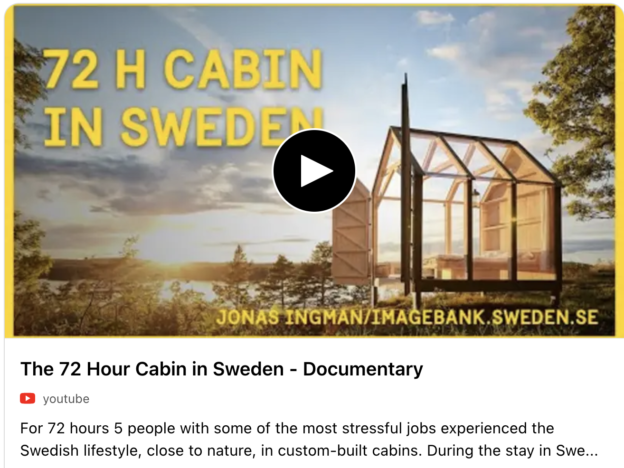
Something Swedish-Ish: The 72-Hour Cabin
I came across this website and video and it piqued my interest. I have a good amount of Swedish DNA and who doesn’t love a tiny cabin drenched in sunshine!??!
As it often happens, I thought of you! Now, I don’t have a couple rustic cabins in Sweden to bring my few readers to. And my guess is that you don’t have 72 hours to devote to such an experiment…
Let’s face it, though: This school year isn’t any easier than the last. The bright spots have moved, the challenges have changed, but the exhaustion and overwhelm are just as present as ever.
So, regardless of whether you are in Sweden, I want you to consider these questions:
Where is YOUR Swedish cabin? Where can you go and feel content and relaxed whilst also being unplugged? Tonight for me it was an Adirondack chair my son built next to a one-match fire I built.
What does unplugging mean to you? For me it means shutting off notifications, staying off social media when it makes me feel icky and giving my exhausted eyes a break.
How do you connect with Nature? It could be as active as going kayaking, biking or hiking. It could be that comfy chaise lounge near an open window where you feel the breeze and hear the birds.
How will you notice the benefit? A big part of this experiment is the data collected before and after. You might not be measuring your blood pressure…. but how are your stress levels? Are you more relaxed? Measure what matters to you.
Be sure to report back!
I’m kidding. This is all for you.
med vänliga hälsningar,
Suzy -
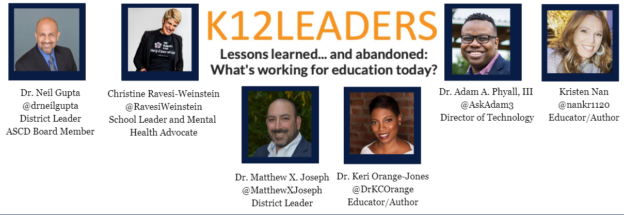
Lessons Learned and Abandoned- Recording available now.
Spoiler alert : Schools are social environments, and “Community” has been a major factor in keeping teachers, administrators, students, and parents engaged over the last 24 months.
On Tuesday, October 5th Dr. Matthew X. Joseph moderated a conversation with 5 educators to discuss what we thought we’d learned over the last year, and how those lessons are holding up as school gets started for 21/22.
Dr. 犀利士 Neil Gupta, Dr. Kari Orange-Jones, Dr. Adam Phyall, Christine Ravesi-Weinstein, and Kristen Nan discussed topics such as:
- How the role of the parent/guardian has evolved
- What “learning community” means today opposed to 24 months ago
- The changing role of assessment in disrupted environments
- The role that technology has played, and how effective it’s been
- And, most importantly… How are the kids doing?
That’s a lot of candid content packed into less than an hour, and it’s worth everyone’s time to take a listen. The conversation was candid, sincere, and funny. You will come away feeling energized, and knowing that we are all, indeed, in this together. Please give it a watch, a like, and a share!
Thank you to all of the panelists, Dr. Joseph, and Edsby, The Social Learning Environment for their participation and support!
-
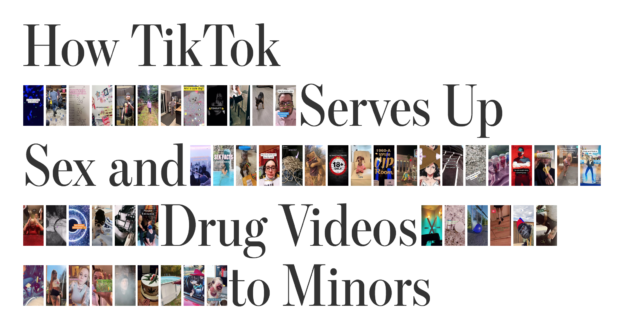
TikTok is NOT All Dance Moves and Cute Pets.
This is an excerpt from my weekly newsletter – ThreeThingsToTryToday. I hope it teaches you more about TikTok’s dangerous business practices and how they can affect our young learners.

Title Image from Wall Street Journal article. Unless you have been lucky enough to live under a rock this week, you probably know about the TikTok Devious Lick and bathroom challenges sweeping the nation – and not in a good way. It takes a LOT to get me to lose my temper, and believe me, I am ANGRY.
I do not have a TikTok account, but over 1.1 BILLION people do. I would venture to guess most users do not understand how their highly secretive algorithms are designed to understand your interests, feed you a diet full of those specific interests and keep you hungry for more. The more you use the app, the more it learns about you. You don’t have to hit “like” or “share”. You don’t have to talk about it or save the content for TikTok to know. That helps, of course – but all the app needs to do is monitor how long you look at each video that comes across your screen.
What you pay attention to grows. Now, that’s great if you’re looking at home decor inspiration, or gardening tips or those sweet dance moves the kids are doing down the hallway. But if you have paid attention to content that is related to depression, or anxiety or violence or VANDALISM or…… well, you know …. Then TikTok will feed you more and more and more….
Think about the BEST buffet you’ve ever been to. Hundreds of choices ranging from healthy to junk. People are around, so you certainly don’t want to be seen choosing too many unhealthy items. But.. what if just LOOKING at unhealthy food for too long was enough to put it on your plate . It would not matter what you chose that was healthy – your plate would instantly fill with unhealthy choices you looked at for a little too long . Over time, you wouldn’t even see the healthy choices anymore .
I’m sharing two incredible resources from a Wall Street Journal project done this past summer.
Their methodology: ” Over the course of several months, The Wall Street Journal set up more than 100 TikTok accounts that browsed the app with little human intervention, including 31 accounts registered as users between ages 13 and 15. The Journal also created software to guide the accounts and analyze their behavior.”
The first is a video that describes the algorithms and how a unique TikTok “For You” feed grows. WSJ makes the lesson very clear for all viewers, even if you are not a techy. Start there.
Then, please check out the second resource (an article) . You will learn the VERY dark side of TikTok and how it can reach our young, vulnerable learners. The article focuses on 13-15 year olds, but let’s face it . Kids have phones MUCH younger than 13 and (too) often create accounts that make them appear 13 . Some of the article is VERY disturbing to read and see, and in my role, I’ve seen a LOT. A. LOT.
That’s why I was compelled to reach out and ask for guidance to share here in my district newsletter. Gratefully, I was given the green light. I felt respected and trusted in my desire to share with you. Honestly, I hope what you learn angers you, too!! I hope it compels you to protect the children in your care. Our kids don’t even have to do a search for something inappropriate using this app. Their innocent curiosity can lead them down a rabbit hole we would never want them in. They will see things we’d never want them to see.
Our students will see things they can never un-see . I can’t stand by and let that happen.
Thoughts? Reactions? Strategies?
-
Lessons learned… and abandoned: What’s working for education today?
A K1212LEADERS Webinar– October 5th, 2021- 7:30 PM (eastern)
Education has changed during this time of pandemic learning. As a result, there are new challenges daily in education regarding effectively educating students and leading schools/districts.
Join 5 K12Leaders from the classroom, school, and district level as we reflect on the opening of school and share what worked and our next steps to create dynamic learning environments. In addition, our team will share practical strategies that have worked and will continue this year to build critical thinking, communication, collaboration, and creativity into their educational system.
Your Panel of K12 Leaders and Educators

Dr. Neil Gupta
Dr. Neil Gupta serves as the Director of Secondary Education for Worthington Schools in Columbus, Ohio. With over 15 years of experience as a district administrator in rural and suburban settings, he has a passion for leadership, building culture, and coaching leaders. Neil presents at the state and national level, and consults building and district leaders and teams in developing and monitoring improvement plans. Dr. Gupta also serves as President on the Board of Directors for ASCD and is an Associate with Creative Leadership Solutions.
Kristen Nan
Classroom Educator, Author of All In: Taking a Gamble On Education and event Speaker


Christine Ravesi-Weinstein
Christine Ravesi-Weinstein currently serves as a high school Assistant Principal in Massachusetts and previously worked as a high school science department chair for four years and classroom teacher for 15.
Dr. Adam Phyall
Director of Technology & Media Services, Named one the Top 30 K-12 EdTech Influencers. Keynote Speaker, and educational influencer


Dr. Keri Orange-Jones
Dr. Keri Orange-Jones is a fifth-grade social studies and science teacher in New Jersey. She has been an educator for 24 years, entering the profession as an Alternate Route Teacher.
Moderated by:
Dr. Matthew X. Joseph
Dr. Joseph is the author of Power of Connections and Power of Us, and has been a school and district leader in many capacities in public education over his 27 years in the field.

-

New changes coming and needed… What will happen to “Whole Class Instruction?”
I shared this the other day in response to a question on K12Leaders.com- “What should we leave behind as we look forward to school next fall?”
My response was Whole class instruction…The idea that one size fits all has been disappearing for decades as the one red school house becomes a relic of the past destined to be clipart or postcard photos taken while driving through the countryside.
In its place has been a slow adoption to differentiation and individualized learning. With an enormous push to adopt 1:1 devices and free wifi for all, teachers ability to use technology for meaningful differentiation and student-paced curriculum will become increasingly more common. Further more, this will impact scheduling and assessments as those that “move ahead,” will have a need to demonstrate their understanding.
In the corporate world, employees ben樂威壯
efit from being strategic with their time management and project/task completion. Schools will pivot to this quickly, or lose their students to online/private instruction. I am sure this change will be faster than most Tinkerings we assume will occur in public education because the dynamics are evolving too quickly as evident by the corporate world remote shifts and access to remote learning. -
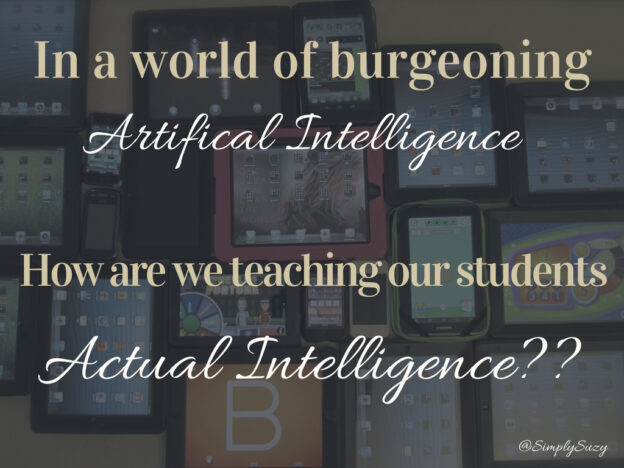
Actual Intelligence
“Good morning, thank you for calling GWV International Travel Reservations. This is Suzy, how may I help you?”
“Hi Judy. Marge from Getaway Travel. I have a couple that wants to go somewhere warm this weekend. Whaddya got?”
“Hi Marge! I will look for availability for two adults out of Boston this weekend to our destinations in the Bahamas, Caribbean and Mexico. Please give me one minute.”
Now, I could relay the entire conversation between Marge and myself from 1989, when I worked as a reservation agent for a vacation charter company. But you can predict, I’m sure…. I would narrow down her choices, answer questions about destinations, resorts, and tourist attractions. I would take down her agency and client details and book the trip. I would relay the confirmation number, and end the call with a “Thank you for calling GWV International, I hope your clients have a fabulous vacation!”

Was I trained for this job? Absolutely! I attended a correspondence school for one year (yes, through the US Mail). My year culminated in a 1-month on-location training at their campus in Florida where I memorized airport codes, countries, capital cities and ticketing regulations. Soon after, I attended American Airlines’ school in Dallas to learn their computer system (Sabre). Once I was hired by GWV, I flew to their destinations with some of the other 30 reservation agents to become familiar with all of the hotels and local activities (I know, tough job).

“Working” on Paradise Island, 1989 Why am I sharing the details of my first ‘career’ with you?
Good question!
Why don’t you watch this video from I/O 2018, and then I’ll tell you why. It’s only 4 minutes:
Nowadays, when my cell phone rings, and it’s “Casey” congratulating me on winning yet ANOTHER vacation, I can tell Casey isn’t real. I can tell she is artificial. She might be able to answer my clever questions about whether she is a robot, but clearly she is not human.
But the video I watched this morning took my breath away. Those voices didn’t sound like artificial intelligence. They sounded anything but artificial. They sounded like actual intelligence .
So that made me think… and worry…. and hope….
Google Assistant could EASILY be Suzy the Reservation Agent. Just fill up a database with dates, locations, resort details, flight times and local attractions and BAM – you’ve got yourself a Suzy. Or a Judy (haha). And you don’t have to send her to school, or put her on a plane to the Caribbean or teach her a computer system. Because she IS the computer system! I know…. It’s 2021. There probably are fewer reservation agents roaming the Earth since the onset of the Internet anyways. But #AI technology could make the species extinct!

And of course, I’m not just talking about reservation agents… Think about it: Artificial Intelligence of this quality can take the place of so many jobs we have come to know. We’ve seen the beginnings of it, but I know after hearing the voices on this video, there will come a time where we will not be able to discern between humans and robots.
Where does this innovative progress leave our students? What do the Suzys of the world do when they graduate from high school and feel college is not for them? Furthermore, are colleges doing any better? How are we meeting the needs of students who will have to make a living and support families? What jobs are we preparing them all for?
I know. I’m not asking anything new, here. I have attended many presentations and keynotes on the topic. I’ve never added my own voice to the cacophony of those sounding the alarm for years. I know our aim needs to adjust to change trajectories for our students. I believe our widespread, traditional model of “doing school” is preparing thousands of human students to be Artificially Intelligent. The COVID pandemic has changed our path where we can better prepare them to be Actually Intelligent .

As an administrator, I often miss being in the classroom; affecting change for my 20 students each year. However, each of us have a moral obligation to affect change for all students . How are YOU changing what school can be? How are YOU advancing your craft to make a difference?
Most importantly…. How are you SHARING what you are doing? Only together can we find ways to meet the needs of our students as they face a future we were never “trained” for.
They are counti必利勁
ng on us.Speak Life,
-
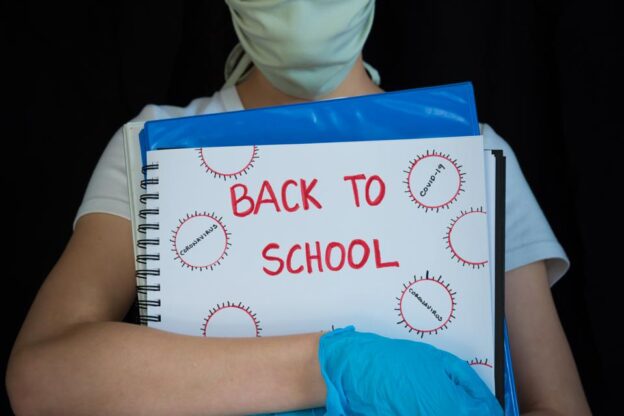
Lessons from 2020-2021: Feedback from District Leaders
It feels like there’s a finish line in sight… it just happens to be a dozen or so weeks away, and then we can take a breath. Maybe. For many educators, anticipating the end of the 20-21 school year involves a blend of dread, relief, and hope. In this update I’m condensing many of the conversations I’ve had with district leaders from across the US over the last 2 weeks. While there’s still work to do, and every single superintendent I’ve talked with is exhausted, there is a cautious optimism that we’ll recover from this past year.
For all the disruptions we’ve navigated over this current school year, we are bound to find more over the summer. Some expect a number dismal results academically (see our earlier post on The Blame Game). Some expect further disruption in enrollments as schools return to more consistent in-person learning. And we expect a lot of turnover in our learning communities.
That turnover, teachers and administrators both, will only amplify the stress educators already feel. Wisconsin (as one example) has already seen a rise in provisional licensees according to the Wisconsin DOE, and the number of teacher applicants has dropped radically in the last year. And in one grouping of 100 Pennsylvania districts the average superintendent has been in their job for just 2.2 years.
So, what have we learned, and how can we execute a plan based on those lessons? The good news is that some there are some very meaningful interventions well within our grasp:
It Takes a Village- we’ve always known that parents and guardians are essential to a student’s success, but that’s never been more apparent than this past year. And along with parents, this year we’ve seen the increased role of student services, and an engagement of teams and staff to help ensure the wellbeing of every student.
so how to respond: develop protocols and systems to help those groups coordinate more easily. Email is not the answer… Invest in portals that easily create groups , make it easy for teams to view and act on student data, and communicate plans and updates from a central location.
Master curricula reduce stress and increase educational quality. While the scheduling disruption this year has affected all of us, teachers who have had a well-developed scope and sequence embedded in their learning management system were better prepared to handle the chaos. And districts that invested the time in helping to populate those curriculums found that both new and experienced educators were less stressed.Collaborate on curriculum design. Federal relief funds would be well invested them PLCs that can design master courses that can be populated into an LMS and shared with every teacher at the beginning of the semester. And as a bonus: a clearly articulated course plan will give parents and guardians a better context to help their students when they are at home.
PLCs and mentoring- with the number of new leaders and teachers in our schools, find those resources that make it easy for cohorts to connect and support each other. As you think about your digital strategies going into 2021, consider platforms that enable “Learning Community Management” along with online content delivery. Seldom do district prioritize mentoring and peer support, and it is frequently left up to the teachers to organize. And young administrators often find themselves alone thinking that they should already have all the answers, but in reality, are clearly learning on the job. Communities and networks like K12Leaders can help connect educators with mentors and peers to coach them through the rough patches.
These are all pretty straight forward.犀利士 .. None of these options require a massive investment, or significant political capital. Most simply build on best practices we’ve understood, but perhaps had more urgent things to take care of over this past year. With the end in sight, and a little bit of hope, maybe we’ll be able to put the energy back into redeveloping these high impact habits!

